The Best Lighthouses in Dublin Bay & How to Get There
The paddle steamer Queen Victoria left Liverpool for Dublin on the 14th February 1853. In the middle of the night the next day, caught in a storm, it hit a rock at Howth Head and sank. 80 out of 100 passengers perished.
It is hard to imagine as you walk along its tranquil shore that Dublin Bay can be a treacherous place. Several lighthouses, mostly built in the 19th century, are here though to remind us that it is not always plain sailing in Dublin Bay.
For those safe on the ground, the lighthouses in Dublin Bay are today worthwhile attractions. Built in stunning locations, they make for a great day-out, exploring coastal towns and soaking in panoramic views. Let me take you to the best lighthouses in Dublin Bay.
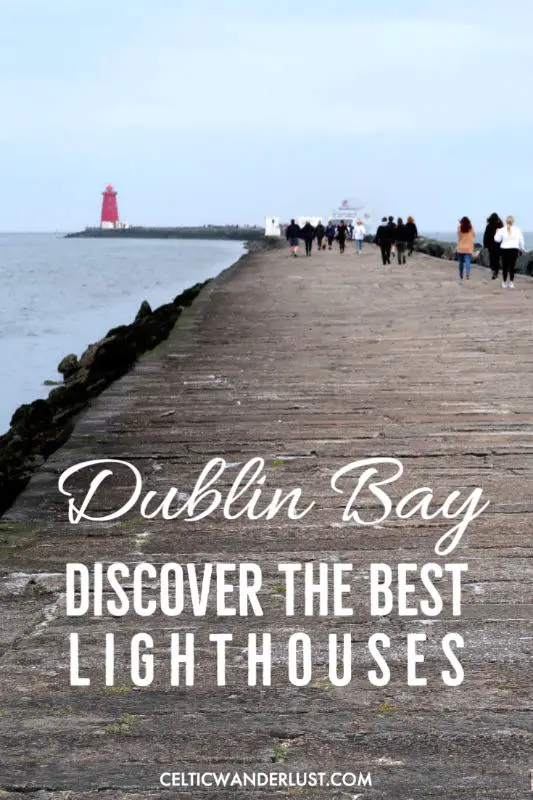
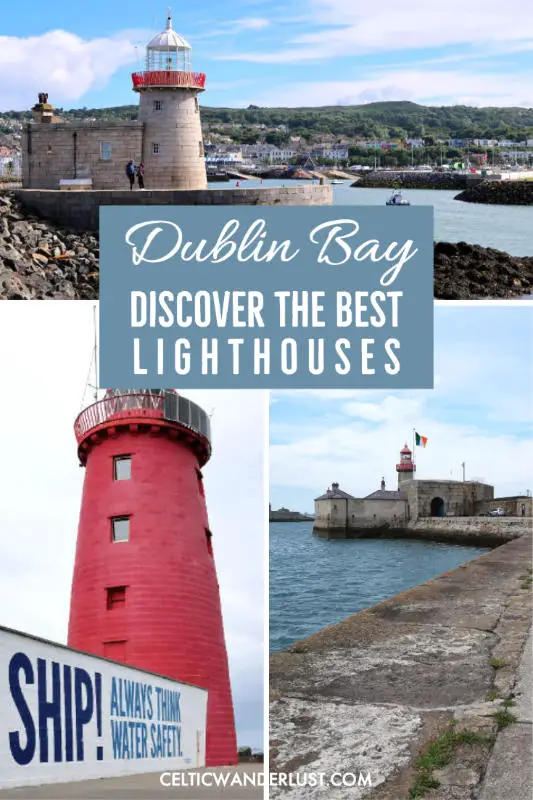
Poolbeg Lighthouse
Probably the most Instagram-worthy of all the lighthouses in Dublin Bay, the red-painted Poolbeg Lighthouse stands out against the blue horizon. First built in the 18th century and remodelled in its current form in the 19th century, the lighthouse is fully automated today.
The 20-metre tall lighthouse is clearly not the most impressive lighthouse you will ever see. What is interesting about it is its location at the mouth of the river Liffey, at the very end of a 6-km long sea wall called the Great South Wall. Standing in the middle of Dublin Bay, Poolbeg Lighthouse is the perfect spot for uninterrupted views over the bay and the coastline.
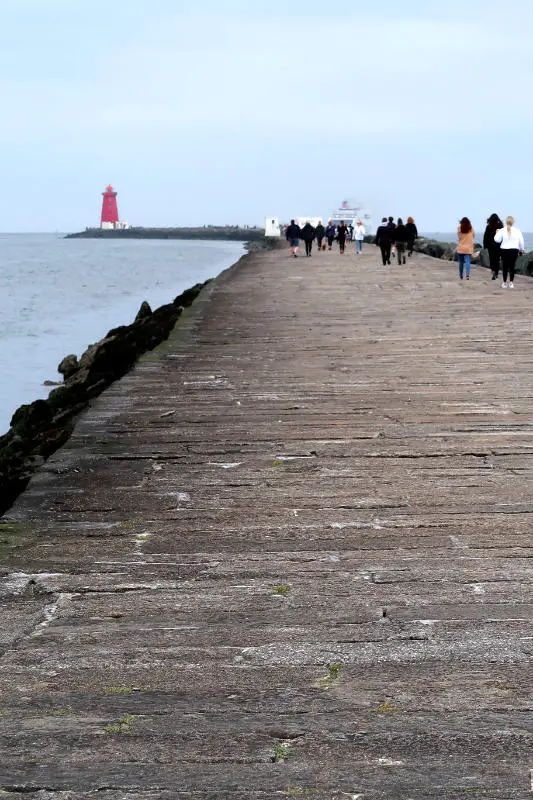
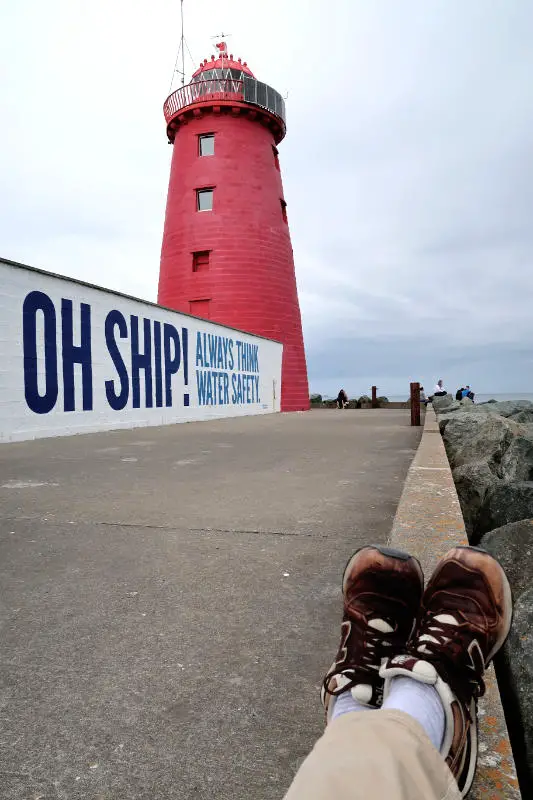
Walking to Poolbeg lighthouse is like walking the Yellow Brick Road to a fairytale destination. As you get closer, the little red dot in the distance takes shape, slowly transforming into a lonely cylindrical tower at the end of the world. The long sea wall makes for a great hike on the east coast of Ireland!
How to Get There
Take the DART from Dublin city centre to Sandymount. Once outside the station, head to Sandymount Strand. From there, follow the coastline to the North, going towards the Poolbeg Stacks (the two slim chimneys in the distance) until you reach the granite sea wall.
From Sandymount, the walk to the lighthouse takes around one hour. Add another hour to return to Sandymount.
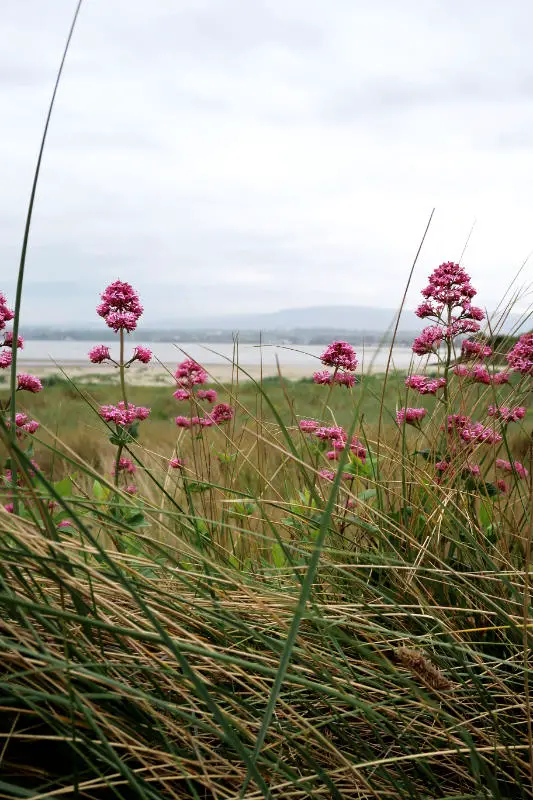
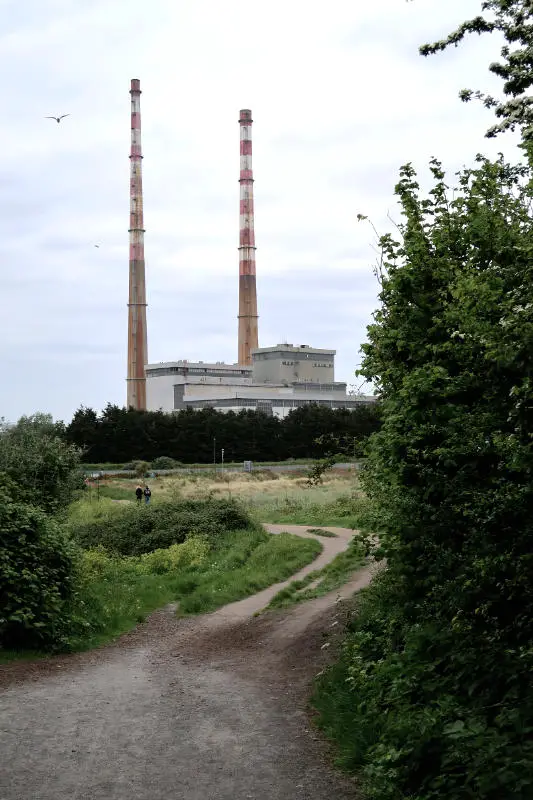
There is also a small but free car park at the start of the Great South Wall.
Wear comfortable walking shoes, as the granite stones used to build the sea wall are sometimes uneven and treacherous.
East Pier Lighthouse in Dún Laoghaire
Boats getting ready to sail, kids donning orange life jackets for their sailing lesson, queues forming outside food trucks for a pick-me-up. Dún Laoghaire’s harbour is a busy place with a holiday vibe, a fantastic seaside town near Dublin to visit during the summer.
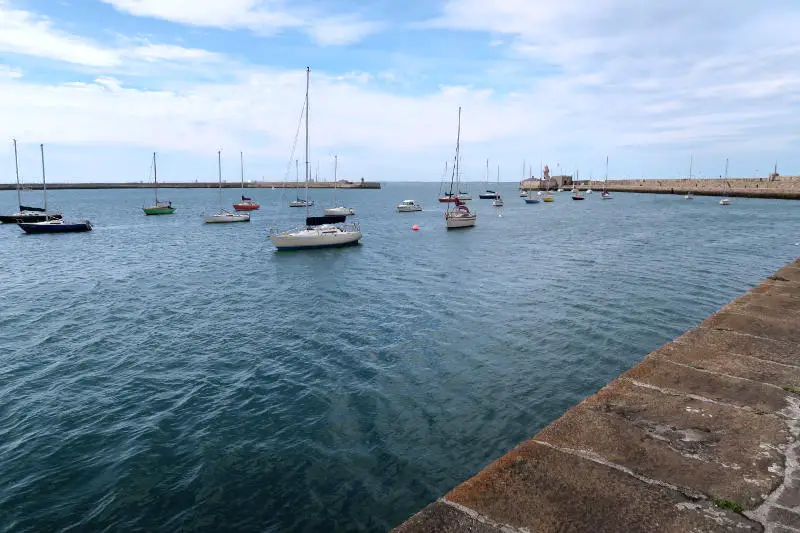
The West and East Pier hug the little harbour like two protective arms, sheltering boats from the boisterous sea. But the East Pier is often the favourite one amongst walkers and joggers. Nearly 3-km long, with its benches and Victorian bandstand, it is the ideal promenade, shielded from the sea and wind by the thickness of its granite wall.
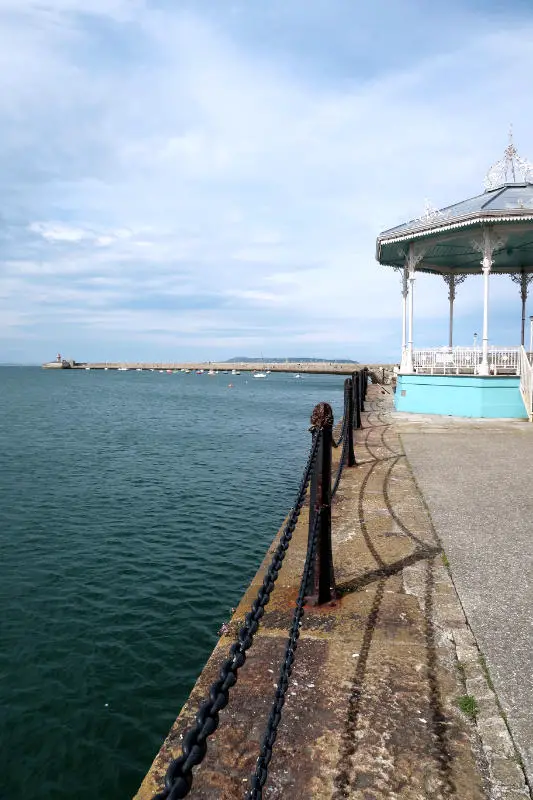
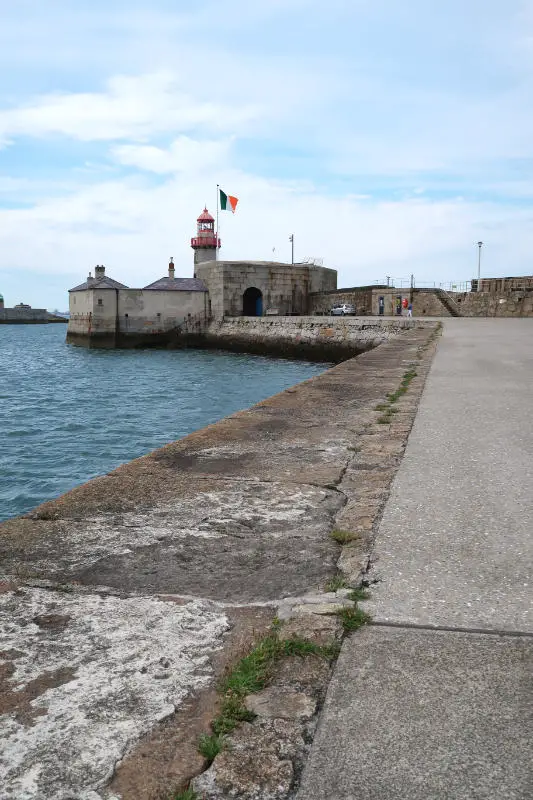
At the very end of it, a lighthouse built in 1847 hides behind large, arched doors. When those are open, visitors can access the lighthouse’s narrow courtyard, where an ice-cream parlour has taken refuge. Climb a few steps and the views over the bay unfold from the lighthouse.
How to Get There
From Dublin city centre, board the DART heading southbound to Bray or Greystones and get off at Dún Laoghaire. The East Pier is only a 10-minute walk from the station.
It will take roughly 30 minutes to the lighthouse at the end of the pier.
You might also be interested in:
– Huguenots in Dublin | What You Need to Know About the City’s French Heritage
– Irish Pub Etiquette | How to Avoid a Cultural Faux Pas
– Things to Do in Phoenix Park, Dublin | A Guide to Its Historical Treasures
– Ireland Travel Books | The Best Guidebooks to Plan your Irish Adventure
Harbour Lighthouse in Howth
Standing at the end of the East Pier in Howth, the little lighthouse keeps a watchful eye over the picturesque fishing village. A date carved high in its cylindrical granite wall is here to remind us of its birth: 1817.
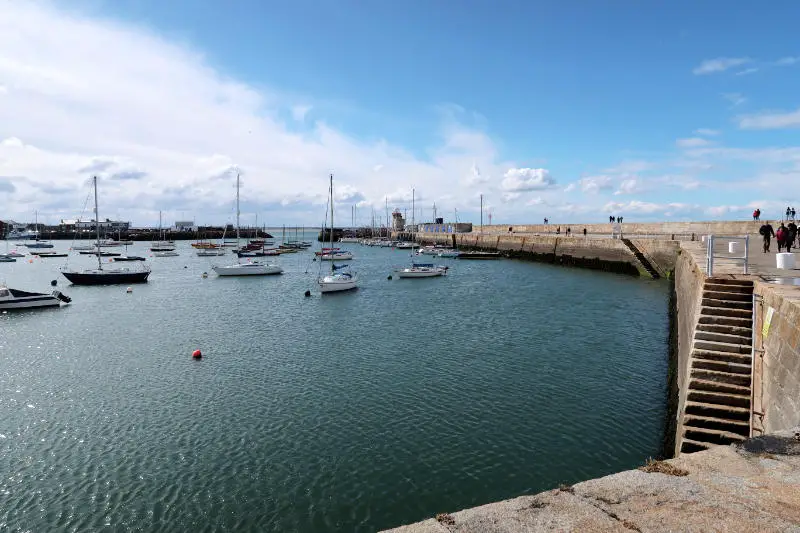
Back then, the lighthouse wasn’t automated. The lighthouse keeper was staying in the house attached to it, like a shell attached to a snail. With its bright red door and purple flowers sitting on the windowsills, the former lighthouse keeper’s house is picture-perfect, waiting to be photographed.
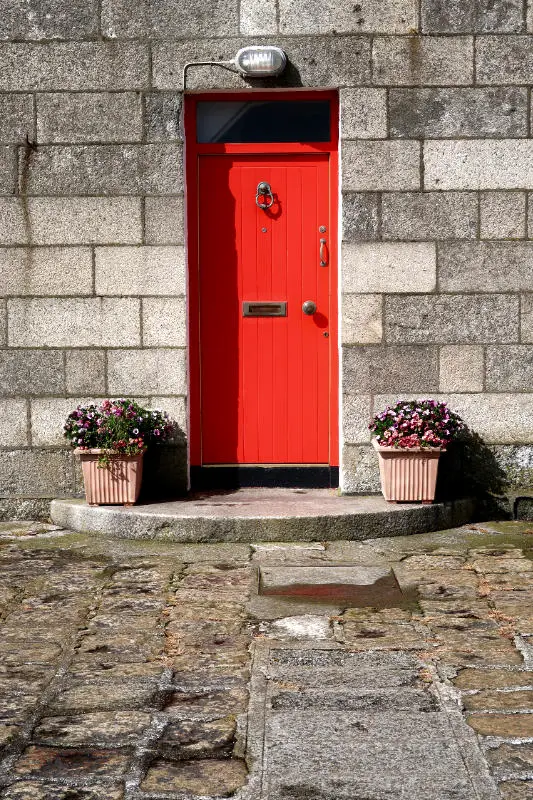
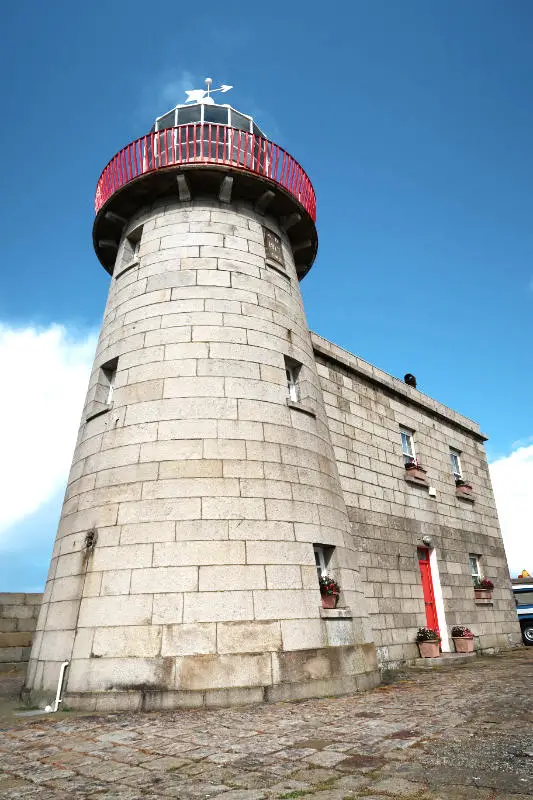
But visitors’ attention inevitably returns to the incredible views over the harbour and the bay. In the distance, you can catch a glimpse of Ireland’s Eye, an uninhabited island and wildlife sanctuary. Turn around and the rugged coastline of Howth peninsula steals the show.
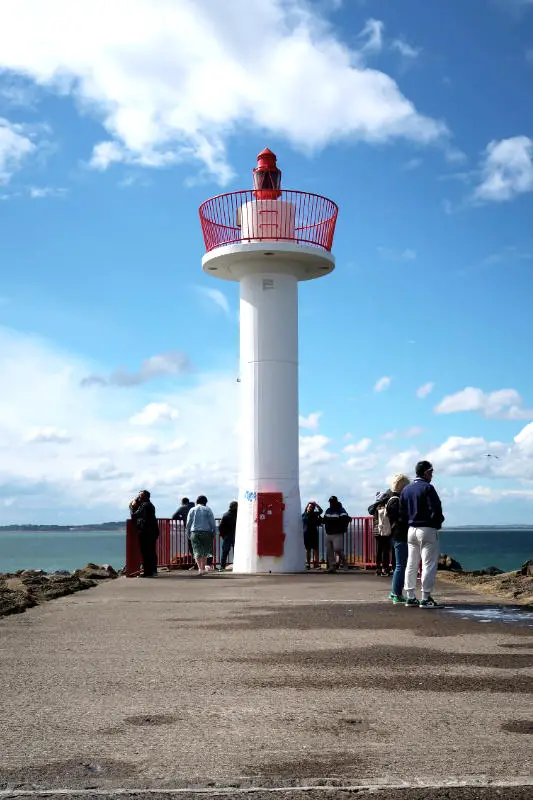
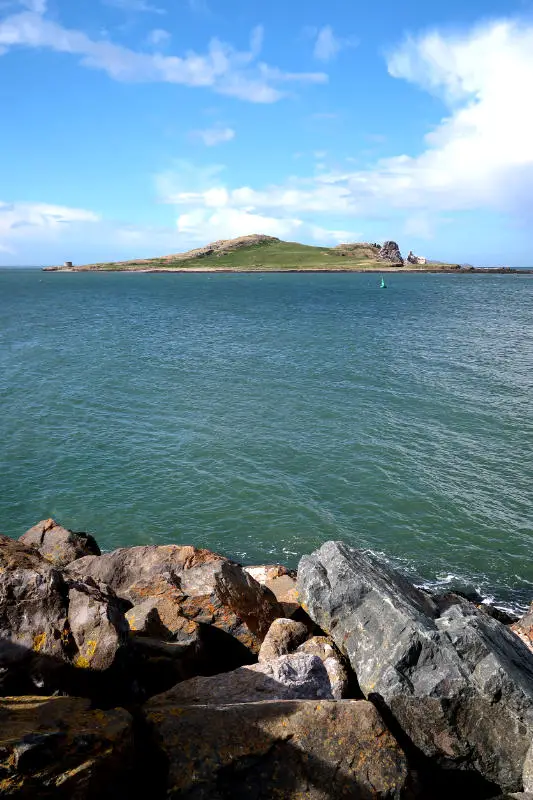
In 1982, the lighthouse was decommissioned and the pier was extended, like a new branch growing from a tree. At its end, a modern pole light was built. Much thinner and without character, the new tower can’t certainly compete with our sturdy lighthouse. However, a walk to the light pole will allow for even better views over the lighthouse.
How to Get There
From Dublin city centre, the DART will take you to Howth in roughly 30 minutes. The lighthouse is then a 20-minute walk from the station. The village of Howth makes for one of the best day trips from Dublin by train.
You can drive to Howth and leave your car at the car park near the harbour. It is a great stopping point on the drive from Dublin and Belfast. Be aware that Howth is a popular destination and car parks can quickly fill up at the weekend.
The Baily Lighthouse on Howth Head
Surrounded by sharp cliffs on three sides, the Baily Lighthouse is truly the most impressive of all the lighthouses in Dublin Bay. The cylindrical granite tower surrounded by several white buildings sits on top of a rocky outcrop, proud and defiant, on the edge of the Howth peninsula.
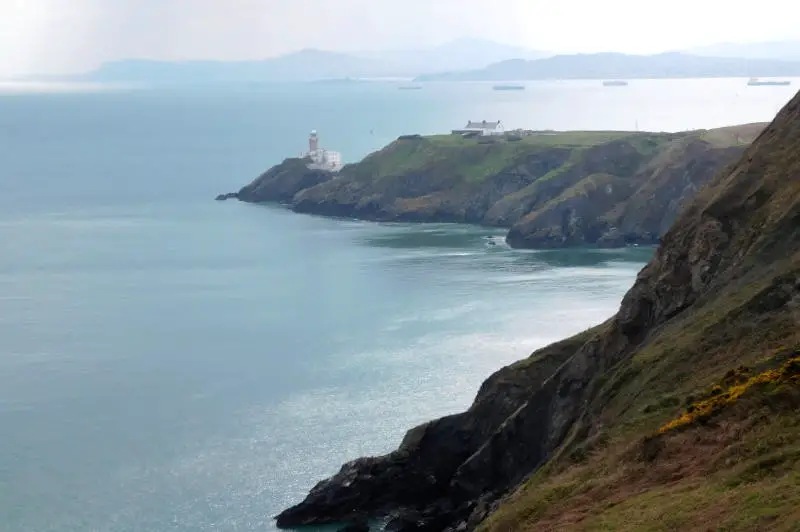
The first lighthouse at this location was built in 1667, a square tower whose beacon was powered by coal. It was replaced in 1814 by a more powerful lighthouse, which received several upgrades along the years. Additional homes for the lighthouse’s keepers were also built. In 1996, the Baily Lighthouse was the last of Irish lighthouses to go automatic.
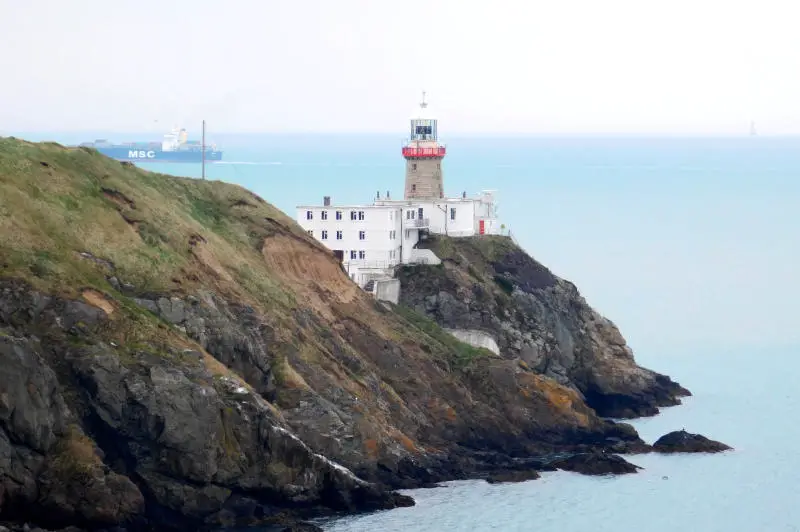
The walk to the lighthouse is idyllic. The path along the cliffs as you depart from Howth offers panoramic views over the sea and the coastline. The Baily Lighthouse is the cherry on the cake as it suddenly appears in the distance against the sky’s blue backdrop. You can’t enter the lighthouse or its complex though, as they are working facilities.
How to Get There
From Dublin city centre, travel to Howth on the DART. You will reach Howth in roughly 30 minutes. You can also drive to Howth and park there.
The Baily Lighthouse is located on the Howth Head loop, a popular walking trail that follows the cliffs around the peninsula. It will take you roughly 1 hour to reach the lighthouse. The path is not strenuous as it is mostly flat, but it can be narrow and uneven, so wear comfortable walking shoes.
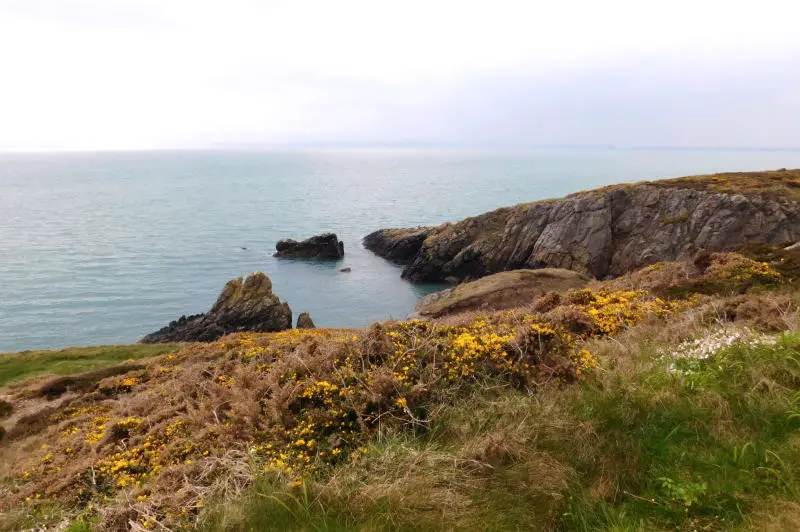
To get on the Howth Head loop, follow Harbour Road in Howth, pass the East Pier and stick to the narrow road that follows the coastline. At the end of the road, you will find the start of the path that leads to the lighthouse.
You are always rewarded with great views when going on a trip to one of the lighthouses in Dublin Bay. Maybe you would like to see more of Ireland’s stunning coastline and lush landscapes. County Wicklow is the ideal destination for that. Follow this Wicklow road trip itinerary for three days of discovery on the road.
Disclaimer: This post may contain affiliate links. If you click on a link, I earn a little money at no extra cost to you.
RELATED POSTS

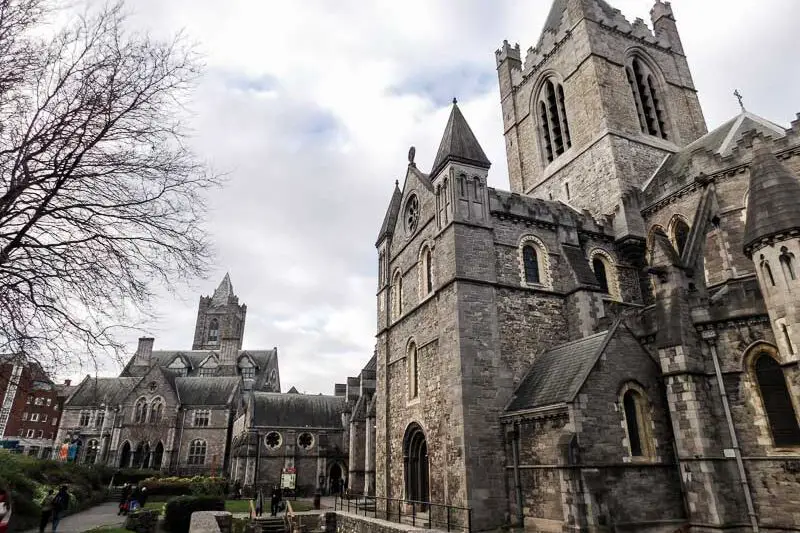


Leave a Reply